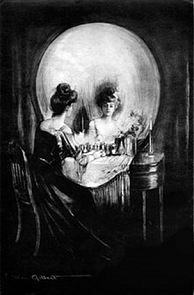What do you see below? That was the question posed to students in our partner schools in Fall River who were learning about neurodiversity this past spring.

In the simplest terms, neurodiversity is defined as the range of differences in individual brain functioning regarded as normal variations within the human population. Our Foundation believes that all the stakeholders in a learning community need to understand that everyone’s brain learns differently and that we all have challenges to overcome and strengths to hone. This engenders inclusivity and empathy, much needed in any classroom.
The workshops focused on how the brain works and how it can work differently for everyone. To prove this point, students were shown the above double image pictures developed by Charles Allan Gilbert. Some students saw a lady looking at herself in the mirror and others saw a skull.
They were also introduced to the concept of learning styles and watched a movie on how everyone has a unique learning profile, which could mean that students need to study and learn in different ways. A vigorous debate then ensued about how each student felt they learned best and why, some identifying two or more ways that work best for them. Others, feeling safe and supported by their classmates, identified how they were distractible, had ADHD, and problems reading or doing math.
To culminate the class, younger students created their own learning profile in which they identified areas that were strengths and others that were challenges. Older students filled out a learning style inventory.
Teachers were left with follow up lesson plans to review concepts with students the next day. Students then shared their learning profiles with classmates. Ultimately, everyone drew the conclusion that from the evidence, every student can learn, just not in the same way.

